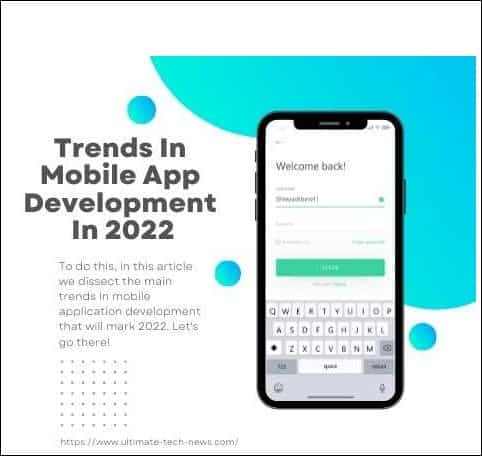The mobile application market continues to grow and evolve and this year brings many new features. Whether you are dedicated to mobile development, or if you are thinking of creating an application for your business, the trends will help you decide where and how to focus your efforts to be successful. To do this, in this article we dissect the main trends in mobile application development that will mark 2022. Let’s go there!
Trends in mobile app development in 2022
1. Incorporate 5G technology
The adoption of 5G is advancing at a good pace and will continue to do so in the coming years. Thus, in 2022 we will see many more mobile applications trying to take advantage of this technology and the higher connection speed it provides.
The adoption of 5G is advancing at a good pace and will continue to do so in the coming years. Thus, in 2022 we will see many more mobile applications trying to take advantage of this technology and the higher connection speed it provides.
5G will change the way applications are developed and used by providing higher throughput speeds, faster data transfer and lower latency. Mobile app developers will be able to create new features without affecting app performance.
This technology represents a revolution for sectors such as video games and a great opportunity to broadcast higher quality streaming videos, integrate AR/VR in apps more easily, add more interconnected IoT devices and make mobile payments safer and faster.
2. Take advantage of the rise of mobile commerce
If online shopping was already an upward trend, the pandemic has boosted it even more. More and more people are choosing to buy online, which has led many businesses to choose to develop their own mobile applications to provide a better shopping experience.
Mobile commerce (m-commerce) differs from electronic commerce (e-commerce) in that purchases are made through a mobile application instead of a web page. Companies are improving their engagement and conversion rates and their revenues by developing native apps or PWAs for their business.
Without a doubt, m-commerce will be one of the trends in mobile development that we should pay attention to this year.
3. Implement AI and Machine Learning
Mobile development has been using Artificial Intelligence for facial recognition for some time now. However, in recent times, companies are realizing that its advantages go much further. Thanks to AI, they not only reduce the time and costs of developing applications, but also improve security and provide a better user experience.
Artificial intelligence has transformed app security, enabling online payment solutions to use facial recognition and biometrics to identify and protect users. In addition, through algorithms that analyze user behavior, it helps to detect fraud, suspicious activities and information leaks.
Other fundamental uses of AI in mobile applications are image recognition, voice assistance, natural language processing or data analysis. We also find it in chatbots and other formulas to personalize the user experience.
4. Use beacon technology
Beacon technology (sensors or beacons) emerge in 2013, but has been gaining relevance in recent years and its market is expected to continue growing in the coming years. They are use, among others, by department stores, airports, museums, hospitals, hotels, festivals and banks. It is a technology with great potential to carry out marketing strategies and provide a more personalized shopping experience.
Beacons are small wireless devices that communicate with a smartphone over short distances via bluetooth. It is a technology that connects the online and offline worlds. Through it, companies can better understand users, monitoring their behavior in their physical stores. While users can receive promotions and alerts in real time and specific to their location, as well as make mobile payments.
Mobile app developers must keep this technology in mind in 2022 to develop apps that integrate well with it and its uses.
5. Integrate with wearables
Wearable are becoming more and more popular and the demand for mobile apps that integrate with this technology continues to grow. When we talk about wearable devices, we are not only refer to smart watches, but to any portable device that can be worn on the body or on cloth, such as jewelry or smart glasses. Their ease of use, portability and the personalized information they provide have earned them the favor of users.
They represent a great opportunity for sectors such as sports and health. Consumers are increasingly concerned about their well-being and are taking advantage of the capabilities of these devices to monitor their health status. But its uses go much further. They apply machine learning to make predictions and detect diseases at early stages and use IoT to send signals in case of user need.

Leave a Reply
You must be logged in to post a comment.